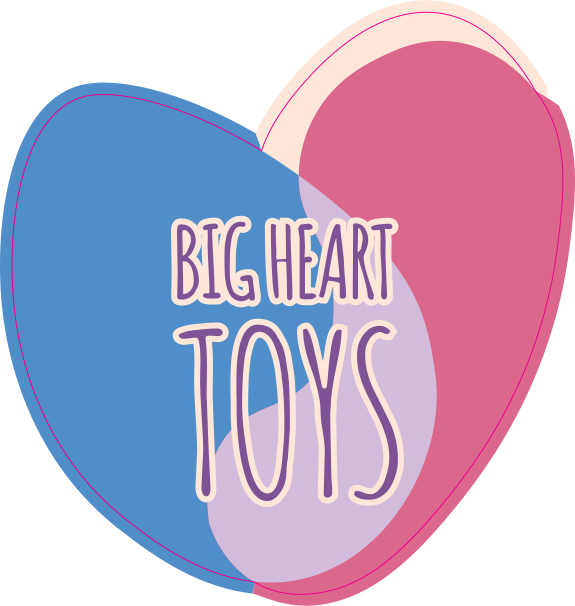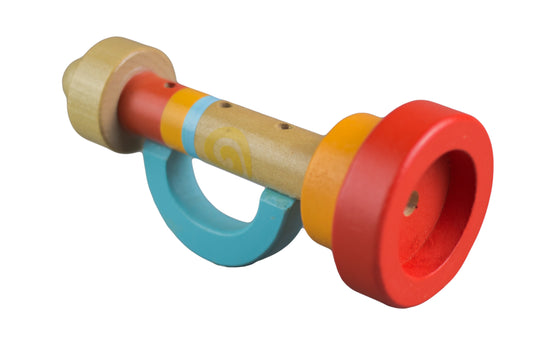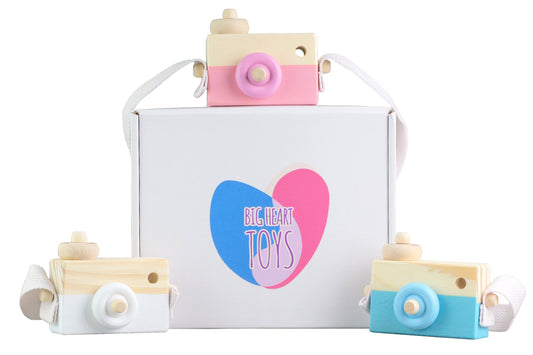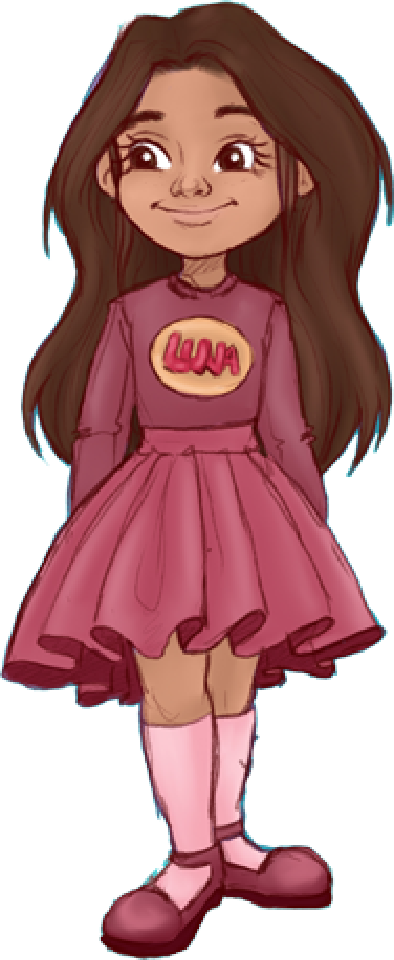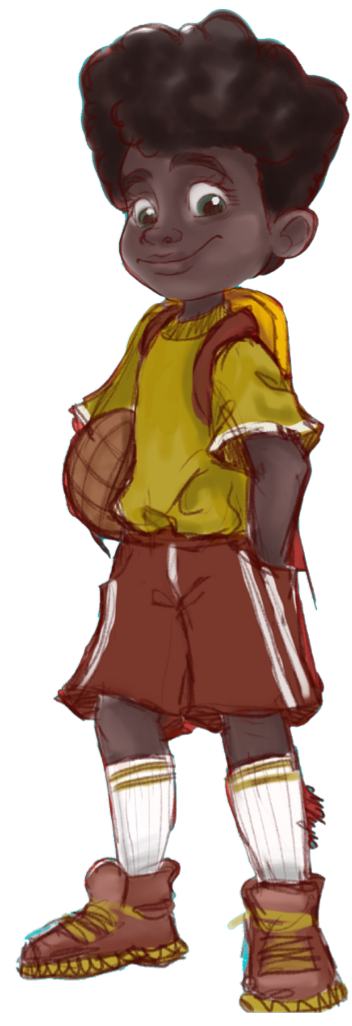When your child is young and just learning how to talk, or maybe they are not as verbal, as parents, we are eager to see this progression. For one, it’s not easy guessing what they want all the time. Secondly, we want to know what our children are thinking and feeling.
There are many ways you can help your child turn talk into conversations, and today we’ll be discussing how toys can be a helpful tool to prompt conversation. Learning through play is the best way to introduce new skills to children. Even though it looks like playing, they’re growing and learning as much as if they were in school.
Let’s talk about how to choose toys to help encourage language skills.
What Toys Encourage Language Development?
Knowing what toys are best for social development and conversation starters is essential. Not all toys are going to inspire conversations; this can be unique to the particular child, age, or situation.
However, certain categories of games aren’t as effective:
For example, a single-player video game where your child plays alone, looking at a screen and twiddling their thumbs on a controller, is not going to spark many conversations. Use imaginative toys that can be played with in more than one way.
Here are a few toys that naturally boost language development, with the added bonus of motor and emotional development.
- Sensory Bins
- These can be changed around and encourage unique conversations based on the kinds of toys and sensory objects used.
- Building Toys
- Blocks, legos, tool kits, train sets, etc.
- Arts and Crafts
- Painting, gluing, and glitter.
- Costumes
- These can be fairy-tale attire, costumes from a favorite movie, dress-up for different kinds of jobs, or even an exploration of clothing from around the world.
- Puppets
- A stage for the puppets is a bonus.
- Stuffed Animals
- Playdough
All these toys can be played with in many different places and in different ways. With each play time, new conversations can be had. The costumes, puppets, dolls, and stuffed animals easily create a natural dialog because of the characters you and your child can play.
Types of Games and Toys for Children With Speech Delays
The toys above are still great tools for children with speech delays or struggles. Plus, they’re just exciting toys in general, and having fun is a cornerstone of childhood. However, you can use some other toys and games to help your child with the basics of phonics to help with their confidence.
Consider these options:
Alphabet Puzzles:
Take the puzzle and dump it. Each letter your child picks up, label that letter and make the letter sound. Attach simple, familiar words to each letter, like “A is for Apple.”
If your child makes the incorrect sound, just keep making the right sound until they can match it. If they get frustrated, move on to the next one and try again another time. Stay away from words like “no” or “that’s wrong.” Also, keep in mind that some children may have wisps or trouble with certain sounds like “R.” Accommodate that and celebrate your little one!
Animal Play:
Hold up animal stuffed toys or plastic play animals, then make those animal sounds. Yes, it is that simple. You only need to get your child to mimic the sounds of animals. With these noises, they can practice stretching their mouths to make the correct noise.
This helps them practice matching sounds that are being made. It’s also a wonderful opportunity to connect animal sounds to animals. This is a fabulous on-the-go activity while in the car. Point out dogs, cows, birds, and more, and make the noises with your kiddos.
Gobbly Goop:
It’s time to get silly and say hello to your inner child.
For Gobbly Goop, make crazy sounds with silly faces. This helps them with sounds that rhyme or have diphthongs: aw, au, oo, ew, oi, oy, ow, ou. When they can make these sounds confidently within non-words, it will help with a translation to regular words.
When your child knows they can be goofy and have a fun time, they’ll feel less internal and external pressure to be perfect.
Language Modeling Strategies
While you play with your child, using a variety of language modeling strategies can be beneficial. These strategies help your child with vocabulary and how to put words together into sentences. When you model the proper language, they can expand these skills into conversations.
Responsive Labeling
Responsive labeling is when you name items that your child holds up or points at. This gives them more of a vocabulary to work with. You can even point at, and label items you think are good for your child to know.
Self-Talk
Self-talk might feel a little crazy at first, but it’s helpful to your child when encouraging more verbal skills and conversation. This is when you say out loud what you are doing. This labels your actions verbally and allows your child to place those words with your actions.
For instance, your narration might look like, “Mommy is building a tower with these red blocks” or “Daddy is petting the dog.”
Parallel Talk
Parallel talk is when you talk about or describe the actions of your child. This allows verbal phrases to match with actions teaching a child what different words mean.
Hypothetically, you might say, “You are hiding the toy whale under the water beads,” as your child plays with their sensory bin.
Toy Talk
Toy talk is an extension of the above strategies, but it’s commenting on the toys and objects in a descriptive way. This promotes the objects in a sentence. Talk about the object, such as the toy’s location, actions, and physical characteristics.
For example, you could list and point to the colors and materials, “The wooden toy trumpet has a light blue handle and a red and orange horn.”
When you talk more, it will encourage your child to start chatting as well. Kids love to mimic their parents; in fact, it’s part of their development to do some monkey-see, monkey-do.
The Importance of Open-Ended Questions
Did you know that there are two types of language skills your child learns during conversations? These would be receptive language and expressive language.
Receptive language is when they understand what is given to them through talk, body language, and gestures. Expressive language is learning to take what we think inside ourselves and put it into language others can understand. Expressive skills are vocabulary, grammar, and sentence structure.
When you use open-ended questions, you prompt both expressive and receptive language practice. Your kiddo has to understand what you’re asking (the receptive skill). Then they need to answer your question with more than one word; they need to formulate a sentence or two to express their thoughts, the expressive skill.
Open Ended Question Examples:
- Can you tell me what you are doing?
- Can you explain… ?
- How did you set up your blocks?
- How do I play with this toy?
- What do you think your dolly is feeling?
- What will happen next?
- What other things are squishy like play dough?
- What would be a good plan for after our playtime?
There are many more open-ended questions to use during play. Your child will greatly benefit from answering these questions. It makes them believe that what they think and have to say matters.
Students will be more confident in school when the teacher calls on them and looks for an explanation of their answers. Your child already has been using that skill with you while they were playing. It will feel natural to find more than one worded responses… at least until they are teens and choose to only say one word unless it is dragged out of them.
Books and Toys Are Conversation Starters
Yep, books are considered to be a special type of toy.
They are the perfect conversation starters, giving you a subject to talk about and framing those open-ended questions around. This is also an ideal opportunity for your child to ask their own questions.
Reading is also a major part of language development. Your child will understand the cadence of conversations by example from the conversations they read in their stories. Proper grammar is taught in the way sentences are structured in the stories.
New vocabulary is learned during story time. Your child can then take those new words and express themselves in a new manner. Instructional books like Leo Plays Nicely can be both entertaining and informative, helping guide children to more productive behaviors.
How long should you sit down and read? It depends. Some little learners prefer 15 minutes a day in one setting, while others do best breaking up that time into five-minute segments throughout the day.
Group Toys Encourage Social Interaction
Group play leads to natural discussions forming between the children. They will have the opportunity to practice good conversations.
Here are some group toy suggestions:
- Board games like Candy Land or Chutes and Ladders
- Puppets
- Housekeeping Toys
- Play brooms, kitchens, phones, food, etc.
- Blocks
- See what the children can build and work on together. Set up a group discussion by suggesting they should figure out how to build a zoo for all the play animals to go in.
- At-home science experiments
- This inspires questions and keeps excited children waiting to see what might happen!
Yes, there is a slight overlap with the toys already mentioned, but they work well in both settings as great toys to start conversations. This will be more natural for your child because they speak to other children.
This form of group play is, of course, helping them to practice and gain more skills to talk to adults. They can then hold conversations with both children and adults as well.
Things To Remember:
- Start your child off with the foundations of proper language for confidence.
- Use responsive labeling, self-talk, parallel talk, and toy talk.
- Ask open-ended questions for more than one-word answers.
- Read to your child daily.
- Pick open-ended and imaginative toys to play with.
- Organize group play for natural conversations.
Now that we’ve reviewed how you can encourage your little one into conversations, pick a toy up — It is playtime!
Sources:
Toy Talk Promotes Diverse "Other Focused" Sentences | DLD and Me
Favorite Speech Therapy Toys Our Therapists Love | NAPA Center
